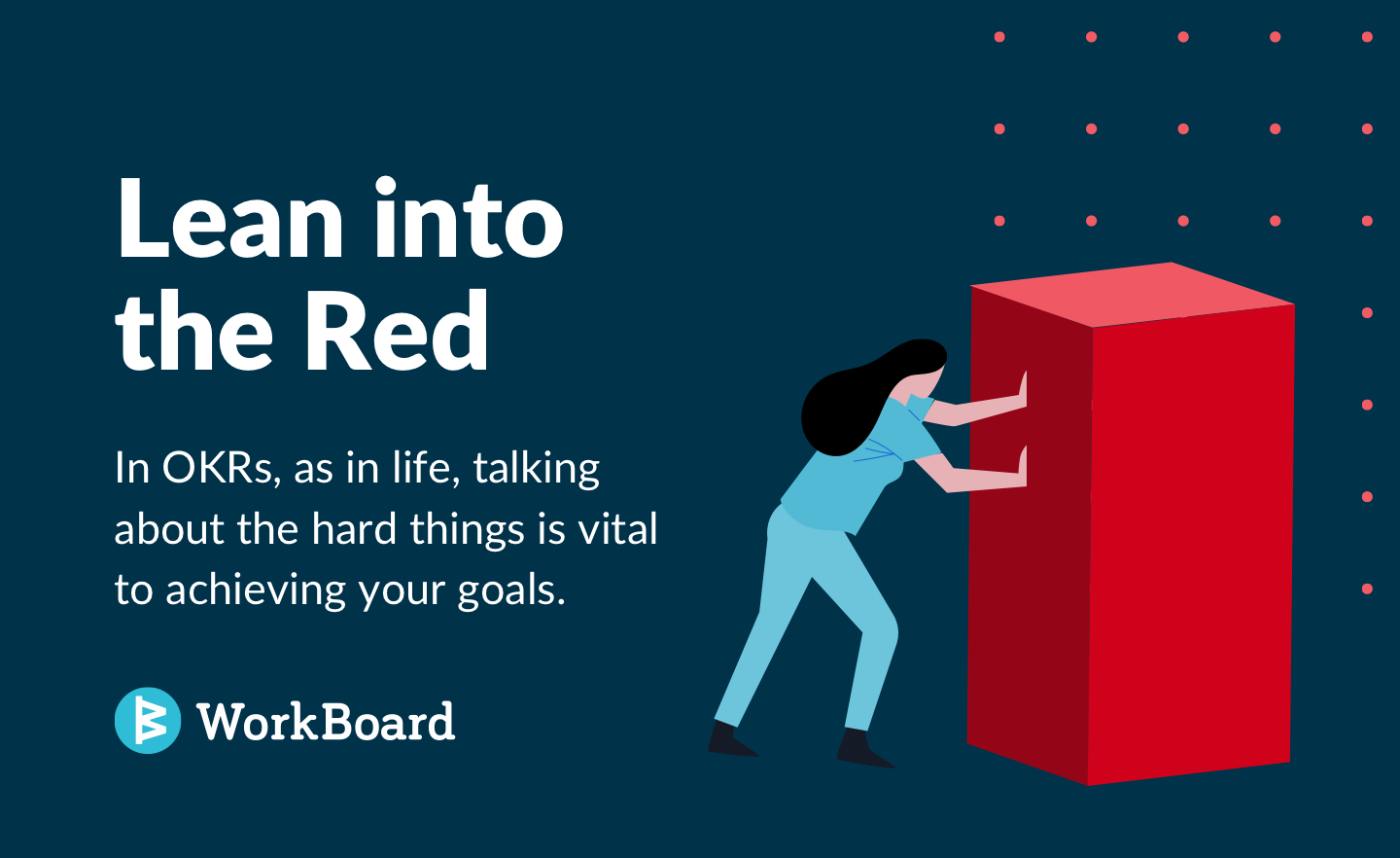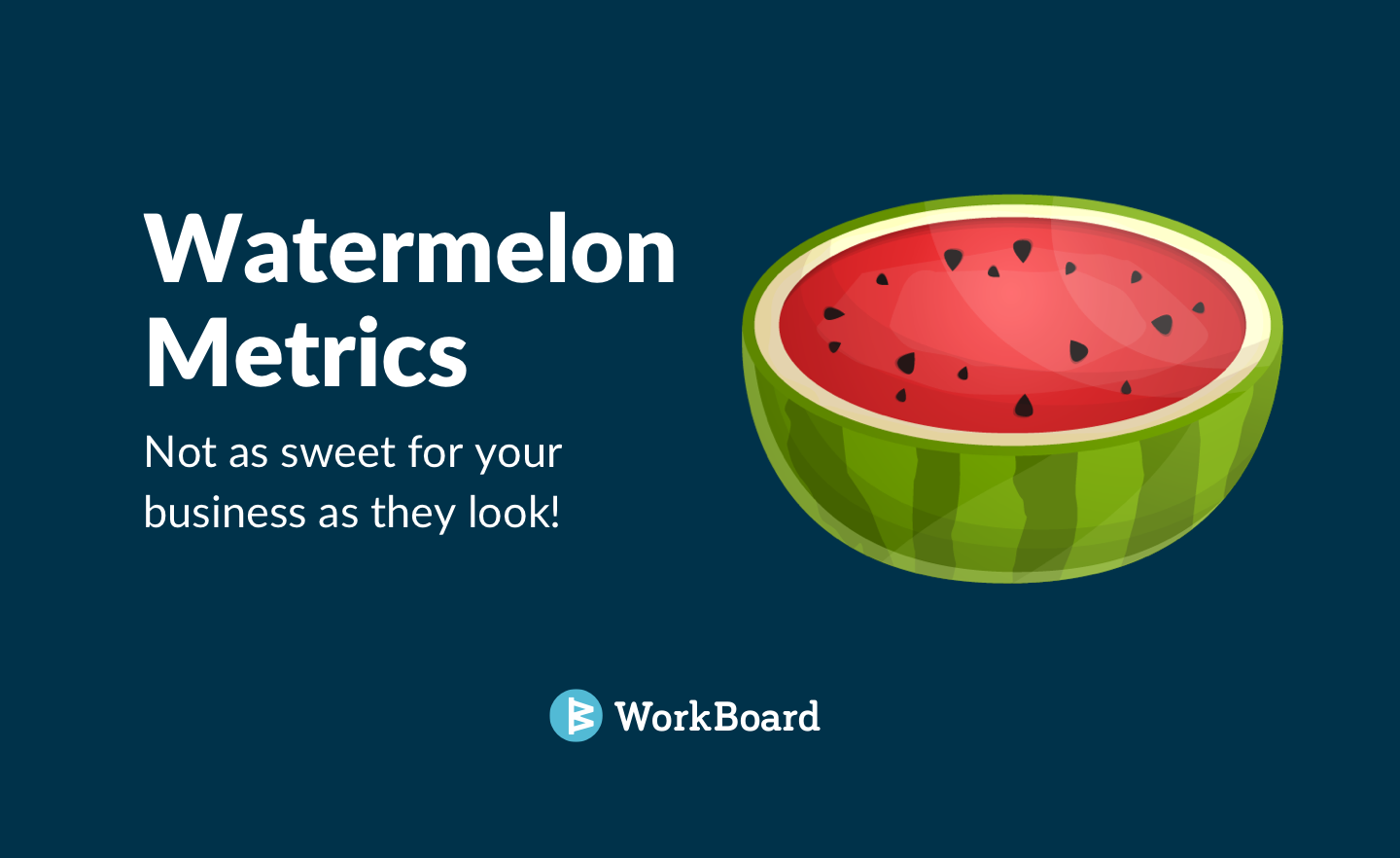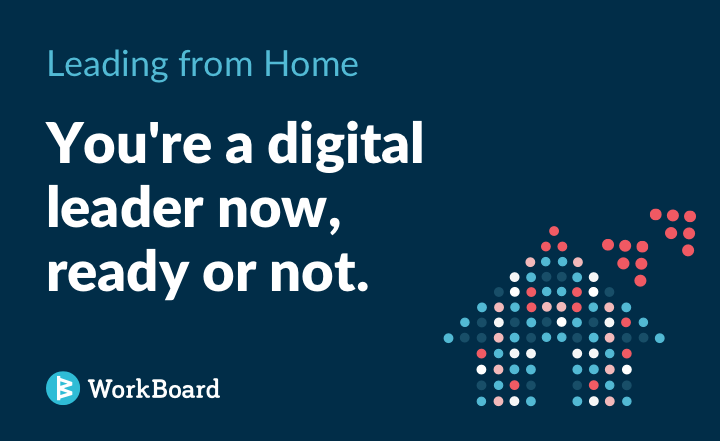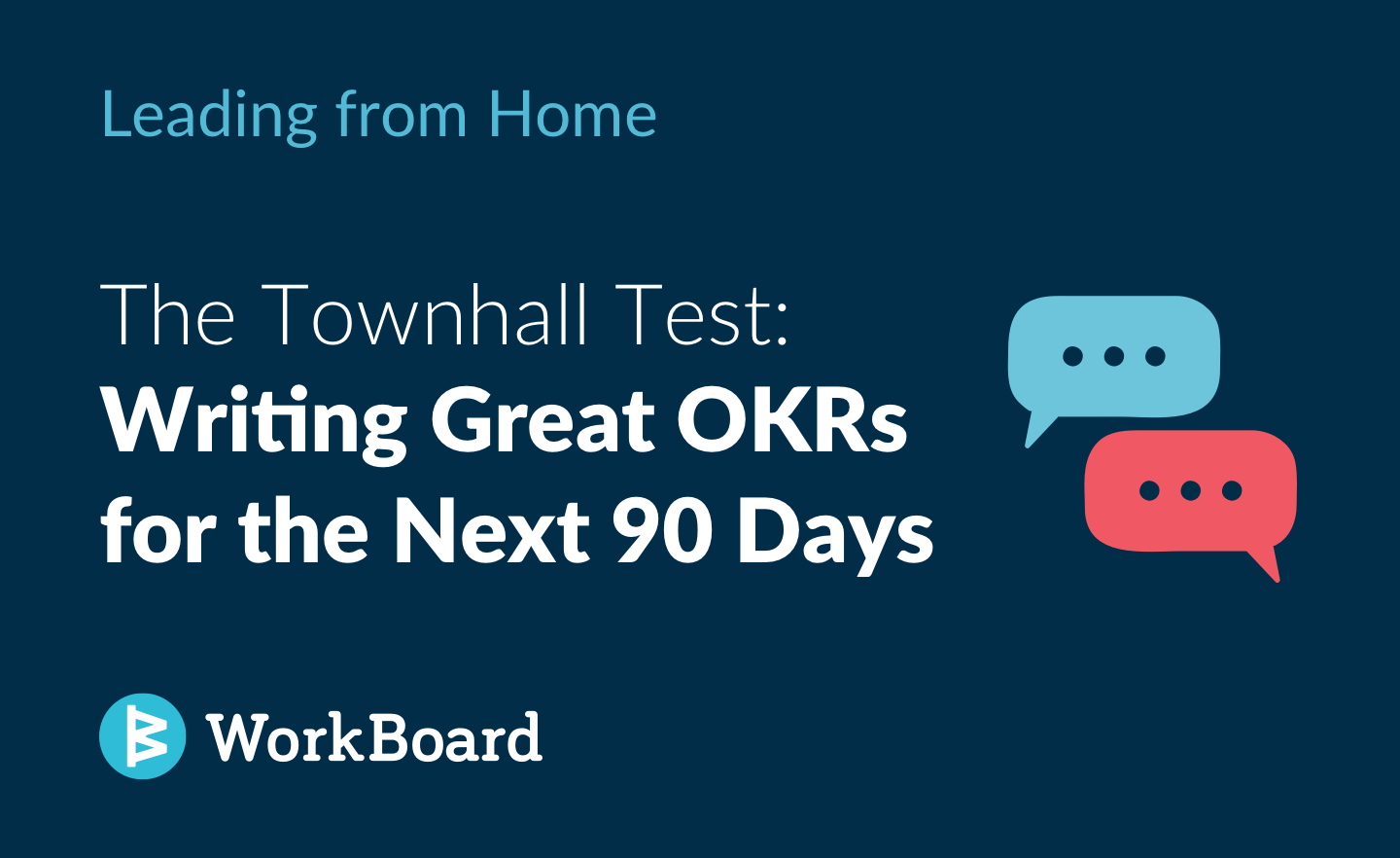
Time is our most valuable resource, and using it to focus on impact is our best investment. While it’s important to celebrate what we’re doing well, targeting the areas that are blocked or need attention is where real growth happens.
When teams meet weekly, progress toward the key results of their objectives has to be on the agenda. There can be a temptation to focus on the Key Results in the green because they’re on track for success in the quarter. These results feel good to discuss, unlike their counterparts in the red. But waiting to discuss KRs in the red until later in the meeting can bring about a situation where not enough time is left to address the issues most in need of attention effectively. The red KRs are the opportunity to improve your eventual outcome as soon as possible — perhaps even in that very meeting.
The goal of OKRs is to pursue the best possible outcomes, the North Star of which are aspirational, inspirational objectives; as such, it's not always a guarantee that all KRs will be met — in fact, a lack of red KRs indicates a team is playing it safe. Therefore, a red KR is not necessarily a marker of failure as much as it is a guidepost toward what needs improvement (this is why it's best not to tie OKRs to performance).
While it's easy to slip into a mentality that suggests anything in red is negative — and therefore uncomfortable to address — bringing the team’s full focus and energy to unlocking the red KRs will generate the most growth.
But, for that to happen, teams first have to lean into the red.
Red means learning
For context, the WorkBoard Enterprise Results Platform tracks progress toward OKRs using shades of green, amber, and red. Green indicates healthy progress toward outcomes, and red indicates that, based on the platform’s proprietary algorithm (basically progress to plan versus time left in the quarter), achieving the best possible outcome will not happen without significant intervention.
“We created this color scheme in WorkBoard because knowing where you’re not making progress is the most important piece of data you can get. Without the clear signal of red and amber on OKRs, you’d need to look at everything just to find the few things that really need your focus — and that would waste valuable time you could spend driving real results.”
— Deidre Paknad, WorkBoard CEO and Co-founder
An enterprise OKR platform lets everyone, from the CEO to the frontlines, know how the business is performing. These indicators provide transparency across an organization — as well as empowerment. When a KR is in the red, it’s a signal not only to the team owning the KR that intervention is required — but also to the entire org. If a KR is in the red, there’s likely a blocker of some sort that another team or organizational leader can remove. A reallocation of resources may be the solution to moving a KR in jeopardy of going unmet toward the green.
Red can also indicate a learning opportunity. As with outliers, the data you need to understand a unique issue or locate a unique opportunity often lies in the area that does not conform to expectations. A KR in the red may reveal a new way of considering the growth or effort involved, as well as the measurements applied to define its success.
Ultimately, the KRs represented in red invite examination and discussion around what it will take to get them into the green and drive the previously established desired outcomes.
Red provides opportunity and accountability
Along with opportunity, the KRs in red provide the information necessary to drive accountability and take action. The information a red KR reveals is only as valuable as the action taken to improve its value.
“KRs can bring about an accountability where someone can actually raise their hand in an empowerment moment and say, "I know what it's going to take to get from red to green," and they can ask for help from executives many levels above them in order to drive the outcome they're looking for.”
— Andrew Kisslo, Chief of Staff, Microsoft Azure
Teams use Key Results to track their progress in WorkBoard. And they can also be displayed in aggregate through WorkBoard’s heatmap to inform leadership that an area of the company needs attention. Seeing what KRs are at risk also lets you see which teams are at risk — and why.
This heatmap display allows other teams or leaders to facilitate solutions that they may have unique insight around proactively. While teams with KRs in the red are welcome to reach out for help, this visibility into what needs attention expands the possibilities for improvement to everyone in the organization. Great ideas can come from anywhere, so this democratization of information is another opportunity to capitalize on the organizational alignment OKRs provide.
Finding solutions for unblocking the KRs in the red opens up the path to improvement.
Red leads to the joy of knowing
Working on what’s in the red requires a conversation to take place — and not in the last few minutes of a meeting. While we place a great deal of emphasis on celebrating the green and giving shout outs to our teams and individuals that are making a strong impact and driving results, that’s a great topic for the end of a meeting, not the beginning or middle.
Looking through all the red OKRs first, despite the resulting discomfort, makes the most sense because they’re the ones that need the most attention. OKRs, when done right, will always have KRs in the red — the danger isn’t in the status, it’s in the potential lack of visibility into the problem causing it.
The wonder of transparency lies in allowing teams to have more impact because, with that visibility, they can improve what is most challenging — and that’s where growth happens.










